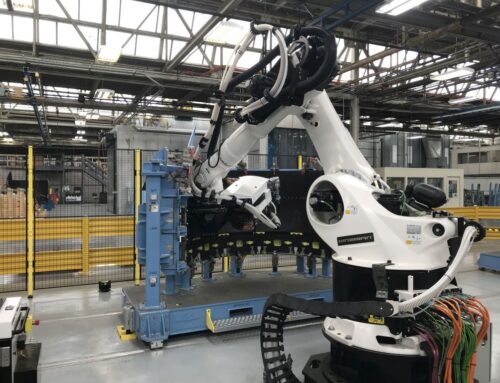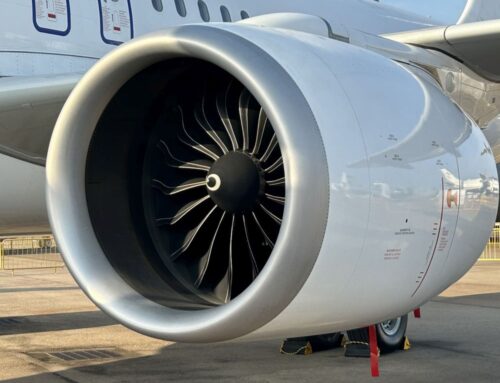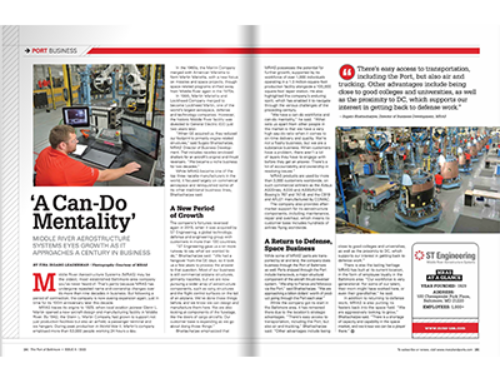
MRAS’ full-sized nacelle exhibit at the Singapore Airshow spotlights the technologies and manufacturing processes that contribute to enhancing a jet engine’s operating efficiency while reducing fuel consumption and lowering noise.
Middle River Aerostructure Systems’ expertise in developing and producing complex engine nacelles for jet-powered airliners and business jets is taking center stage at the Singapore Airshow this week with the unique experience of literally stepping into a full-scale nacelle on the exhibit stand of parent company ST Engineering.
In a first display of its type, airshow attendees will have an immersive encounter that highlights the main elements of a nacelle – the external protection for a jet engine, which also contributes to its operating efficiency, along with reducing fuel consumption and lowering emissions and noise.
The display represents a full-sized nacelle for a typical single-aisle jetliner in the 150-200-seat category, and highlights many of the design features and production techniques applied by MRAS. It begins with the air inlet, which is highly refined aerodynamically to reduce fuel burned, incorporating such features as a single-piece inlet lip skin, a single-piece composite inner acoustic barrel and low-weight composite outer barrel.
“Being able to walk inside a full-scale nacelle provides a true experience of the size and interrelationship of all elements that come together in this complex component on jet-powered aircraft,” explained Terry Vernes, the Director of Process Engineering and Composite Operations at MRAS.
Manufacturing technologies for composites and acoustic treatment
MRAS applies advanced manufacturing technologies that contribute to the nacelle’s higher quality and lower weight, including resin transfer molding (RTM), which is used in producing the internal components called “beavertail” fairings, as well as for the blocker doors that are key elements of the nacelle’s thrust reverser.
Automated fiber placement (AFP) with industrial robots is utilized in the creation of such components as large nacelle transcowls – reducing cost and weight.
The nacelle’s interior acoustic treatment employs precision robotic drilling techniques in creating the millions of precise, tiny holes that contribute to lowering a jet engine’s overall noise output.
Additionally, the nacelle’s composite “thumbnail” fairing will transition to out-of-autoclave manufacturing – reducing energy consumption when compared to the use of autoclaves for the curing process, which is aligned with MRAS’ drive to decrease its carbon footprint.
MRAS produces a full range of nacelle products for jetliners such as the Airbus A320neo and COMAC’s C919 (both in partnership with Safran Nacelles), the COMAC ARJ21, and Boeing’s 747-8. In the business jet category, MRAS has the lead industrial role in the Passport integrated propulsion system on Bombardier’s Global 7500, which is supplied via the Nexcelle joint venture.

The MRAS nacelle is a prominent feature of ST Engineering’s Singapore Airshow exhibit (Booth G01), which includes a nacelle “center of excellence” display with a video of production processes at MRAS’ Middle River, Maryland industrial facility.



